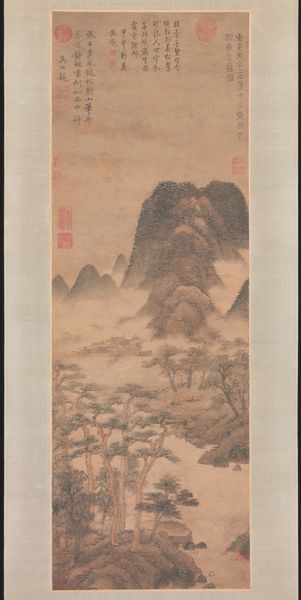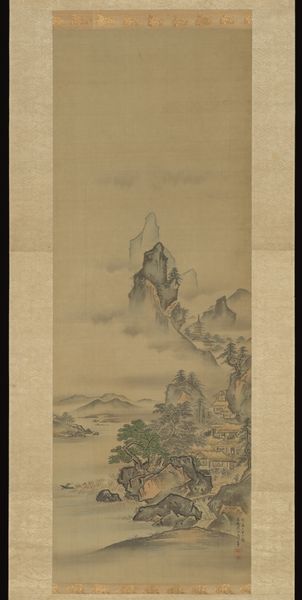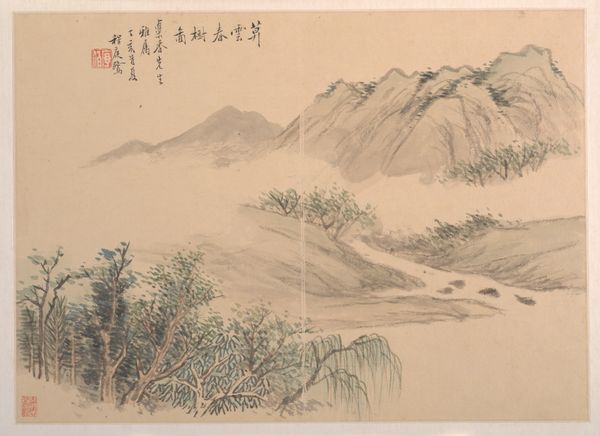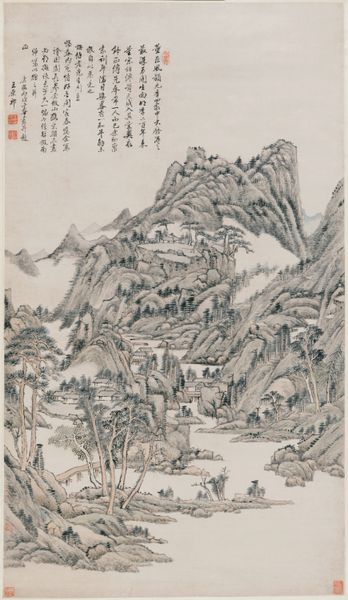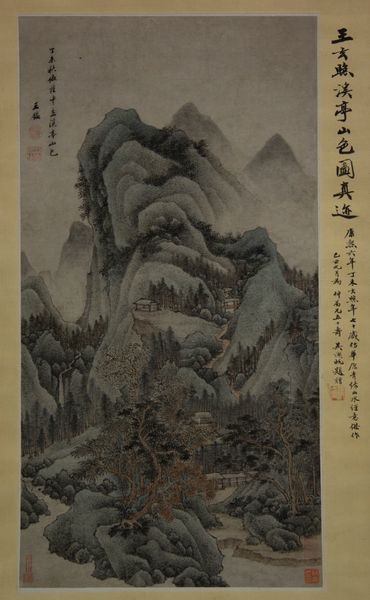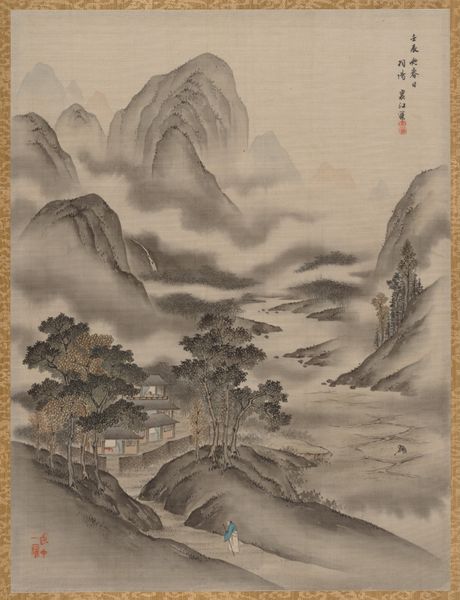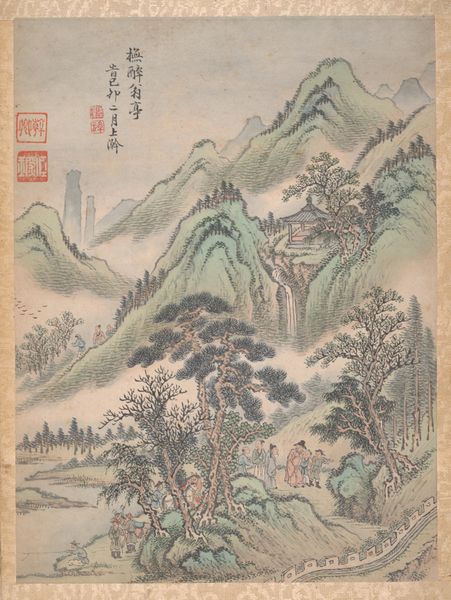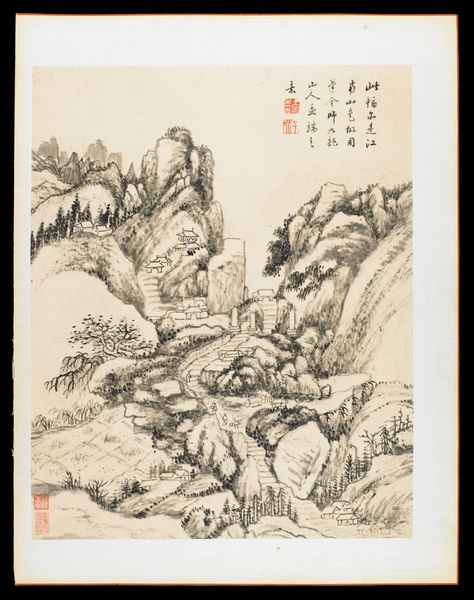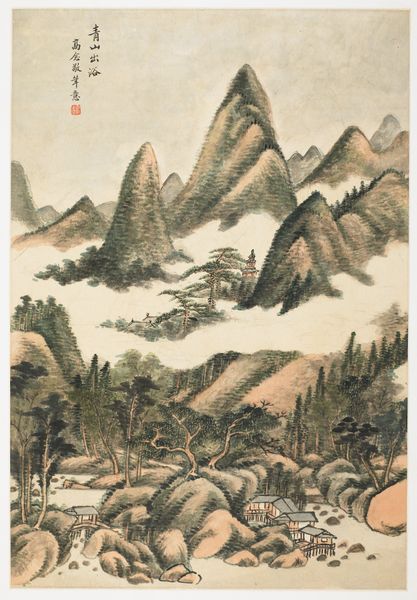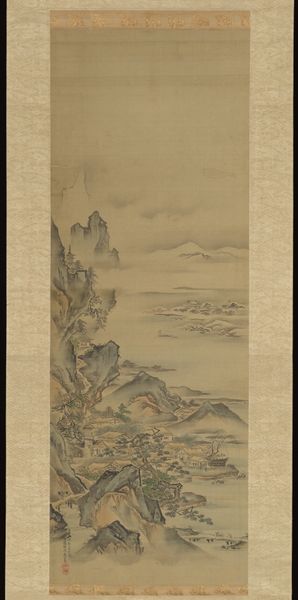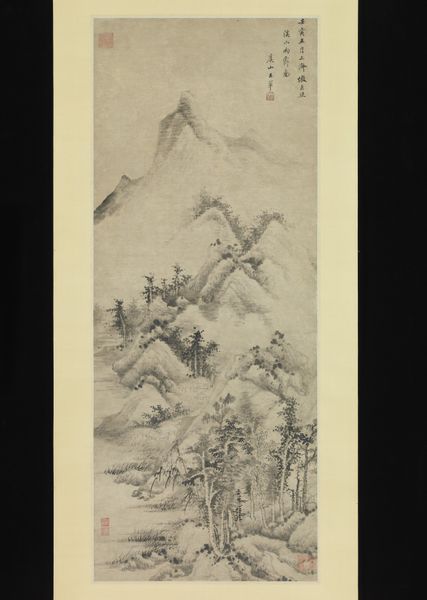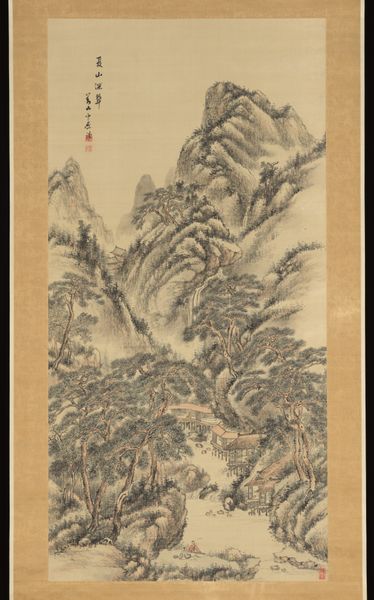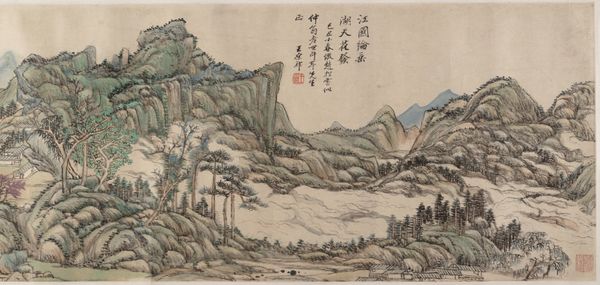
painting, paper, hanging-scroll, ink
#
painting
#
asian-art
#
landscape
#
paper
#
hanging-scroll
#
ink
Dimensions: 44-3/4 x 23-1/4 in. (113.7 x 59.1 cm)
Copyright: Public Domain
Wang Shimin created this landscape painting with ink and colors on paper, emulating the style of Huang Gongwang during the Qing Dynasty in China. Wang Shimin, deeply rooted in the literati tradition, looked back to earlier masters like Huang, seeing painting as a conduit for expressing personal values and cultural identity. The painting incorporates visual codes of serenity and harmony that reflect a Confucian ideal of social order. The cascading mountains and misty valleys suggest a world of retreat from the political turmoil of the time, and the painting would have spoken to a cultural elite navigating a rapidly changing social landscape. The act of emulating past masters was itself a statement, asserting continuity with a rich artistic heritage amid dynastic transition. To understand this work fully, we turn to historical texts, biographies, and studies of artistic lineages, seeing the art not just as an aesthetic object, but as a cultural document.
Comments
minneapolisinstituteofart almost 2 years ago
⋮
Because of his father's meritorious service to the Ming court, Wang Shimin was admitted to government office in 1614 as a secretary. By 1636, he had risen to the position of vice-minister of the court of Imperial Sacrifices. Following the Manchu conquest in 1644, he retired to Taichang where he pursued artistic activities. His integrity and social stature insured his family's continued prominence and his son Wang Shan became grand secretary under the Kangxi emperor. Wang Shimin became the leader of the so-called Qing orthodox school of painting and, together with Wang Jian, Wang Hui, and Wang Yuanqi formed the mainstream literati group known as the Four Wangs. Under Wang's leadership, the stylistic reconstruction of Chinese landscape painting, formulated by Wang's teacher Dong Qichang (1555-1636), was now perceived as the orthodox (and politically safe) lineage for literati painting. Literati masters of the Yuan dynasty (14th century) were greatly admired by the Four Wangs, and it is not surprising that this bucolic mist-shrouded mountain scene by Wang was inspired by the Yuan master, Huang Gongwang (1269-1354). With its light, earth-toned washes and deliberate use of horizontal texture strokes, this classic landscape typifies Qing orthodox school painting.
Join the conversation
Join millions of artists and users on Artera today and experience the ultimate creative platform.
